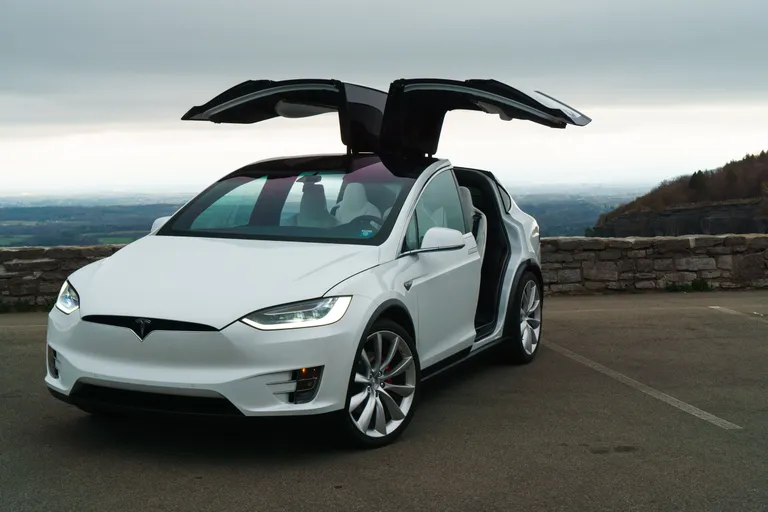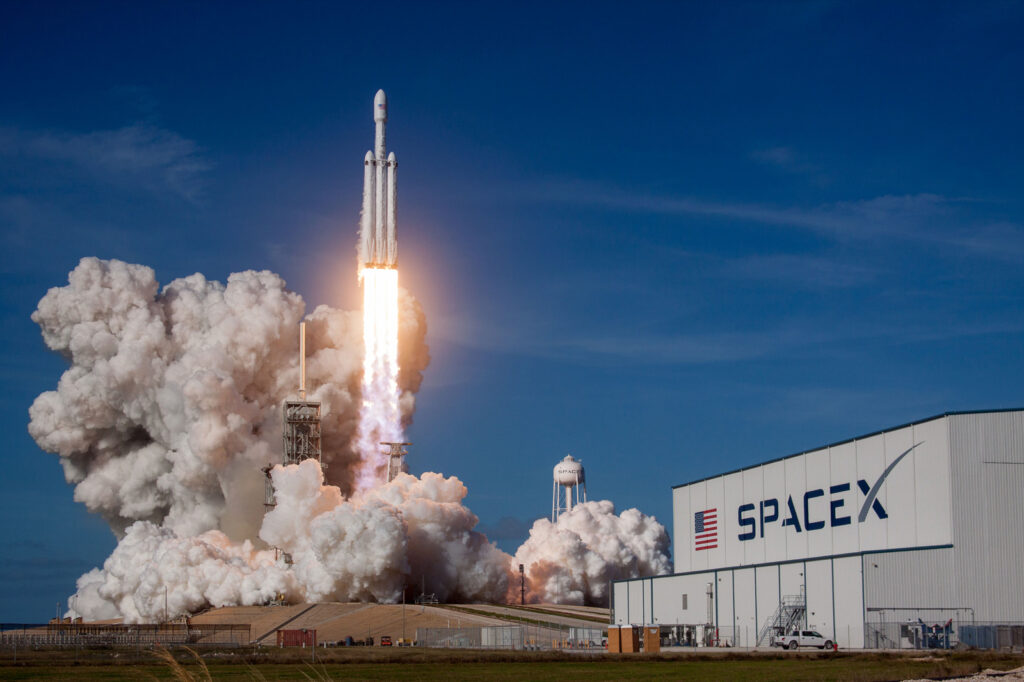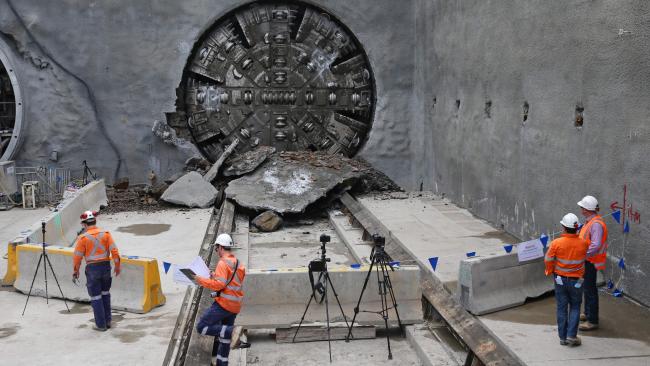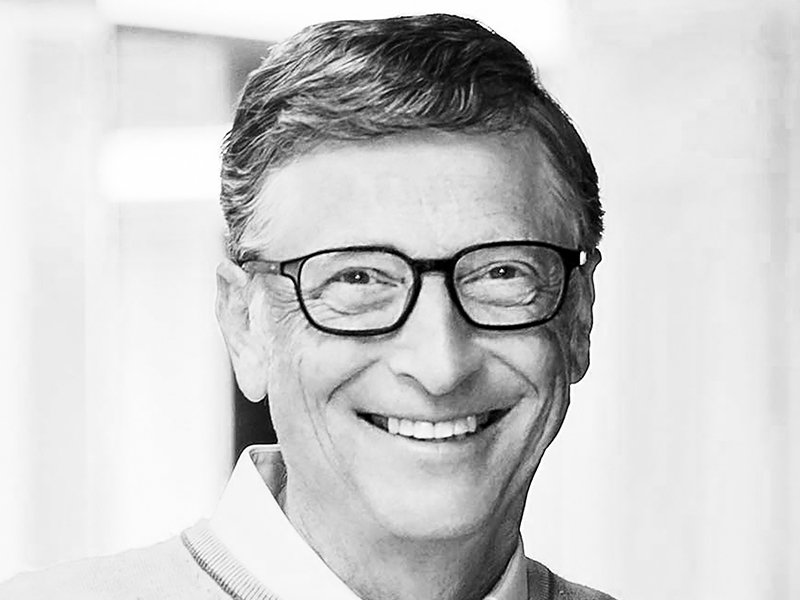What scientists should learn from Elon Musk
I’d like to present a review of the 2023 biography Elon Musk by Walter Isaacson, including an analysis of what scientists should learn from Elon Musk.

Setting the stage
Scientists are trained to dream small. Of course, there are good reasons for this reductionism. Our collective scientific knowledge has advanced to the point where the gaps in our understanding are at incredibly fine scales. We truly stand on the shoulders of the giants who came before us, and the collective benefit to humanity created by the modern scientific community has been dramatic and irrefutably positive.
But our modern day projects have become so technical and narrow that most of us don’t dream of big outcomes like curing a disease. (My doctoral dissertation centered around single molecules at the nanometer scale.) Instead, we settle for contributing to the body of knowledge that will slowly build into the cures and paradigm shifts of coming decades. This lack of ambition, ownership, and urgency results in our current day situation where scientists aspire to grow their C.V. or get that next promotion.
I’m taking a bold, provocative stance. Stay with me for this thought experiment.
The vision
Imagine a world in which individual scientists like you aspire to cure a disease or invent a world-altering product. I don’t mean composing an “impact” paragraph for your grant application or manuscript (although, in practice, those are still narrower, further into the future, and more hypothetical than what I’m envisioning). Imagine a world where individual scientists occupy the collective consciousness of lay people and frequent the media headlines. This imagined world is so far removed from our reality that it’s difficult to even imagine. And, while I assume that very few scientists want to channel their inner rockstar and dominate the 24 hour news cycle, the extremism of this thought experiment may yield insight.
Enter Elon Musk—not a scientist, but certainly a technical engineer. (Let’s do our best to set aside the myriad controversies he is constantly embroiled in for the time being. We’ll get to it later.) I’d argue that he has brought by far the greatest set of technological advances to the physical world in the last 50 years, compared to any other individual. His companies include:
Tesla
As the first commercially successful electric car company, they made sexy, performant vehicles instead of eco-miniatures. In a few short years, Tesla managed to out maneuver some of the biggest companies in the world. They’ve made significant strides towards self-driving cars and advanced the automotive computing paradigm. Perhaps most impressive, they’re putting millions of vehicles on the road each year, requiring the development of enormous manufacturing capabilities with extreme velocity. Oh and did I mention they’re building humanoid robots?

SpaceX
They figured out how to build their own rockets and then land them on barges floating in the ocean! In the process they lowered launch costs by roughly 90%, opening up space to customers beyond governments and the world’s largest multinational corporations. SpaceX has thousands of Starlink satellites in orbit providing truly global internet access. They continue to push the engineering of rockets, setting their sites well beyond the ambitions of current customers like NASA. SpaceX wants to send humans to Mars in the near future.

NeuraLink
Their long-term ambitions are to enhance human perception and abilities. This Matrix-like futurism is balanced against a still wildly ambitious aim of giving people with quadriplegia the ability to control computers through an implantable brain-computer interface device. Before you scoff at this as utter science fiction, look into their accomplishments with animal models (monkeys controlling video games with their minds!) and consider that the United States Food and Drug Administration has cleared NeuraLink to begin a clinical trial with the technology.

The Boring Company
Focused on transforming big infrastructure and transportation projects, they have developed the machinery and processes to quickly, cheaply, and safely connect locations with underground tunnels. They’ve already proved their abilities by building tunnels in Las Vegas. Now, they’re creating specialized subway-like transportation networks crawling with high speed self-driving Teslas.

The breadth of ambition in these ventures is staggering, and Elon Musk is the leader behind—or perhaps more accurately in front of—these companies. Of course, all these companies are staffed with competent, ambitious people who carry out the day-to-day operations. But it can’t be a coincidence that a single individual has nurtured all of these technically ambitious companies into existence. Take a moment and consider the counterfactual: if Musk was never born, would all of these collective advances have occurred?
What can scientists learn from studying Elon Musk?
Be dramatically ambitious in your scientific goals
Don’t settle for incremental advances. Elon didn’t settle for automatic lane assist, he insisted on full self-driving capabilities. Since then, his constant and vocal predictions that full self-driving cars would dominate the road in mere months have come and gone so many times, it’s become a joke. But make no mistake: these missed deadlines are by no means “failures”. To the contrary, Tesla has made incredible advances during this time.
The crucial lesson is that, by striving towards and inevitably falling somewhat short of a dramatically ambitious goal, you will make enormous progress. (“Shoot for the stars, land on the moon,” as the folksy saying goes.) Consistently applying this mindset creates the opportunities to make paradigm-shifting advances, while almost guaranteeing significant incremental progress as a worst case scenario. The net effect is a very steep advancement trajectory that is antithetical to the incrementalism inherent in entrenched market leaders (read The Innovator’s Dilemma for a thorough analysis).
How can you aim bigger in your scientific projects?
How do you avoid getting trapped in incremental thinking?
Musk lives in the world of atoms AND bits
In the midst of a decades-long boom in the dominance of businesses of bits—e-commerce, internet advertising, social networks, and software—Elon is an industrialist in the world of atoms. He builds physical machines that embarrass Ferraris in acceleration specs, dig enormous holes, or travel to space. Yet, these physical innovations are empowered by artificial intelligence and molecular dynamics simulations. He’s simultaneously Bill Gates and Cornelius Vanderbilt. As science drills down to smaller subatomic scales or supermassive black holes in distant reaches of the universe (both ungraspable by lay people), Musk builds advanced technologies that are tangible in the everyday physical world.
Have you ever considered how you could bring your science out of the lab and into the physical world to be experienced by lay people?
Fail, learn, iterate
The scientific method is all about failing, learning, and iteration, but the stakes are generally fairly low. In contrast, a younger Elon Musk staked over $100 million on his SpaceX bet. Widely considered a crazy, doomed venture, the first three rocket launches all failed and the company almost ran out of funding. In a riveting narrative, the author Walter Isaacson describes this tense time inside the company where high stakes learning culminates in a successful fourth launch. From there, SpaceX has continued to fail and learn in a productive way. While maintaining a greater than 99% launch success rate with their Falcon 9 workhorse, they have continued to push their technology forward—learning from some spectacular failures in the development of their huge Starship rocket.
The essential characteristic that separates informed risk taking from outright, irresponsible gambling is an understanding of the relationship between risk, effort, and potential learning. Generally, risk and effort are anti-correlated. In other words, you can expend enormous effort de-risking your ventures—for example, spending 10 months preparing and then running dozens of control conditions to ensure that your experiment will be interpretable regardless of the outcome. But imagine there’s an 80% chance that you’ll be able to interpret your experiment with only 2 months worth of effort. Would you take that risk?
Risk vs effort vs reward
Our shared academic training tells us to take the conservative approach and opt for the more complete experiment. As you step back and consider all the possible outcomes of your experiment, you’ll realize that there are really only a few ways where everything works out perfectly and you’re on your way to a paper in Science. There are many, many more possible outcomes where the experiment partially fails and you end up with partially interpretable results.
Given the probability of this imperfect outcome, why not simply embrace it? In this context, the Pareto Principle might be translated as 80% of the information is relatively easy to learn from an experiment, whereas the other 20% is really difficult to tease out. So get to that 80% as fast as possible and don’t get held up pursuing the other 20%. Stitching together a few of these imperfect experiments might point you in a completely unforeseen direction—much faster than if you had required that perfect experiment before moving forward. In the worst case scenario, you gain confidence that you’re on the right track and really do need to labor through that perfect experiment. Yet in this case, you would have de-risked the experiment—gaining confidence that the time investment will pay dividends.
As a scientist, the hard part is to develop the intuition around the relationship between risk, effort, and reward. If you magically had all of these relationships quantitatively modeled you could just plug in the numbers and determine an optimal answer. Unfortunately the world doesn’t work that way. However, there are three principles I’ll provide for your consideration:
Diminishing returns
Microeconomics tells us that each unit of marginal effort will generally result in diminishing marginal reward. So don’t spend your life expending a lot of energy on things that don’t move the needle for you.
The Power Law
Venture capital investors know that they can’t predict the next Google. Yet, they consistently post enormous returns by leveraging their understanding of the Power Law. They intelligently screen out bad bets and try to enrich for good prospects, then they place their chips down on dozens or hundreds of startups. Even after all this effort, they expect to completely lose their investment in 90% of the startups! But they calculate that if they hit it big on only one or two investments that return 100x, they will be immensely prosperous. As a scientist, maintain a diverse project portfolio, understand some will fail, and take big enough risks to ensure success if only a few work out.
The value of time
When you’re a grad student or an entry level employee with low wages, it’s easy to forget how valuable your time is. Perhaps you reason that, although your time is not worth much now, you are making an investment in getting that Ph.D. or first promotion, and that might be true to some extent. But consider how value compounds over time. If you were to make three investments in learning or doing something divergent from your current position, you may unlock enormous future earning potential. In this scenario, your current time is incredibly valuable. In fact it might be so valuable that you rationally shouldn’t invest any extra time on your day job. This line of reasoning applies not only to money, but also academic prestige or any other goal.
Devote some dedicated time to thinking about these problems, approaches, and opportunities.
As a scientist, do you take big risks and quickly iterate on your ideas?
Do you spend too much time trying to set up your perfect experiment when you should be squeezing all the probability-informed analysis you can from smaller, imperfect experiments?
The algorithm
Everyone who interacts with Elon Musk knows about his famous algorithm. To call it an algorithm undersells it. Really it’s a philosophy, mantra, and Platonic ideal wrapped into one and lived out in conference rooms, at desks, on the factory floor, and on the launchpad. It’s articulated in five simple steps.
1. Question every requirement
In our world of divided labor, requirements are passed down to a “doer” through many layers of bureaucracy. This results in designs and decisions that don’t make sense to the people on the factory floor or to the overall function of a final product composed of modular sub-systems. Elon Musk demands that requirements passed from above are not blindly followed. He creates a tension between layers of the bureaucracy, forcing designers, engineers, and assembly line workers to interact and solve problems together.
2. Delete
Extra components, processes, and stakeholders complicate things. The result is often more expense, slower production, and overall inferior products. Elon’s solution: delete things that may be unnecessary. Note that you needn’t be certain it’s unnecessary. In fact, he says that you’re not doing enough deleting unless you have to admit you’re wrong and add back at least 10% of your deletions.
3. Simplify
Given the choice between complication and simplicity, choose simplicity. Realize that everyday is an opportunity to simplify, so always be looking for hidden complications. Parsimony is the principle that the least complicated explanation is generally most likely, and Musks’s simplify step is a close cousin.
4. Accelerate
Musk is famous for the incredible pace of manufacturing and innovation in his businesses. He almost never accepts the timelines he’s given, constantly challenging his employees to find ways to speed things up. While his estimates are almost always too ambitious, his managers normally find ways to significantly accelerate things. It’s yet another example of constant challenges and questions in his relentless pursuit of results.
5. Automate
Although he’s also famous for building robots, it’s notable that automation is last in his algorithm. Elon spent a huge amount of time and money automating one of the Tesla factories but later realized that he had skipped ahead in the algorithm. The process was overly complicated, so they had automated a bad process. They ended up scrapping all the automation in an admirable illustration of how to avoid falling prey to the dangerous sunk cost fallacy.
Musk truly lives out this algorithm and has ingrained it deeply in his companies.
His first principles thinking and reductionism meshes well with scientific culture while providing a check on its dangerous tendency to overcomplicate. Parsimony—the principle that the simplest explanation is the most likely or the simplest solution is the best—dominates Elon’s companies. But translating a principle into action is not straightforward. Elon’s algorithm is actionable. Do you have your own algorithm? If not, take his and make it your own. Most importantly figure out how to translate your principles into action.
Be kind and considerate
There’s also much to learn from Elon Musk in terms of how not to act. This is one of the most important facets of biographies. In the same way that you should avoid political echo chambers, you should avoid unbalanced portrayals of pretty much anything. Walter Isaacson paints a rich picture of a technical and business dynamo who is often inconsiderate at best and fairly offensive at worst. Held to present expectations of political correctness and empathy, Musk seems legitimately incapable of succeeding.
If you already despise the man for his seemingly constant newsworthy missteps, you should still read this book. If you hate the energy he puts into the universe through his tweets and interaction with employees, become hyper aware of the energy you exude in all your relationships and interactions. You’ll never go wrong by being kind and considerate.
The socially awkward scientist
Elon Musk’s mercurial behavior is not so different from many Americans’ archetype of a scientist. If you don’t believe me, watch an episode of the primetime sitcoms Young Sheldon or the Big Bang Theory. These television shows portray scientists as quirky, socially awkward, ivory tower idealists who struggle to interact with common folks. The plots are designed to get a laugh out of the awkward interactions, but occasionally they drop the levity long enough to show the same behaviors causing serious hurt. As a real scientist, you know that whatever kernel of truth exists in these premises, scientists are more or less regular people. But remember that a large fraction of the US population doesn’t personally know a scientist.
As work and life bring you out of the academic or R&D bubble, be cognizant of preconceptions people might place upon you because you’re a scientist. If there are aspects of that caricature that you don’t want to be associated with, go out of your way to set your own first impression. Maybe dress more professionally than your co-workers. Network widely with non-scientists and hone your conversational skills. Don’t abandon your identity as a scientist but develop other facets of yourself, so you can flex your presentation to meet the needs of any given moment.
While there’s nothing wrong with joking about an internet meme in some aspects of your life or making nerdy physics jokes with your scientist buddies, a shareholder earnings report call is not the place for it. Elon Musk has the personality and public facing visibility to starkly illustrate the importance of controlling your image. Apply this lesson to your much less dramatic life.
Wrapping up
As you consider this analysis, try to keep your feelings about Elon Musk the man separate from your feelings about him as a technical innovator and builder. There are important lessons to learn from both—perhaps negative in the former and almost undoubtedly positive in the latter. But these lessons should not cancel out, making him a zero in this cosmic equation.
“You can feel whatever you want about Elon’s behavior, but there is no one in our time who has done more to push the bounds of science and innovation than he has.”
Bill Gates

I’m with Bill. Like the rest of us, Elon can to be more than one thing, even if they complicate our feelings about him. He’s definitely not the type of person I’d want in my personal life, and I don’t think I would enjoy working for him. However, I’m extremely appreciative that he exists. I don’t think we’d have realized the technological advances in electric cars and rocketry that benefit our world without his relentless ambition and focus. Everyone could benefit from studying him—both the good and bad—and the perspective of scientists is a particularly relevant lens to assess technological innovators.
I hope you read and enjoy Elon Musk by Walter Isaacson. Let me know your thoughts on the book, my takeaways, and how it impacts your life as a scientist.
Email me at scott@advancingscientists.com or drop me a line on LinkedIn.